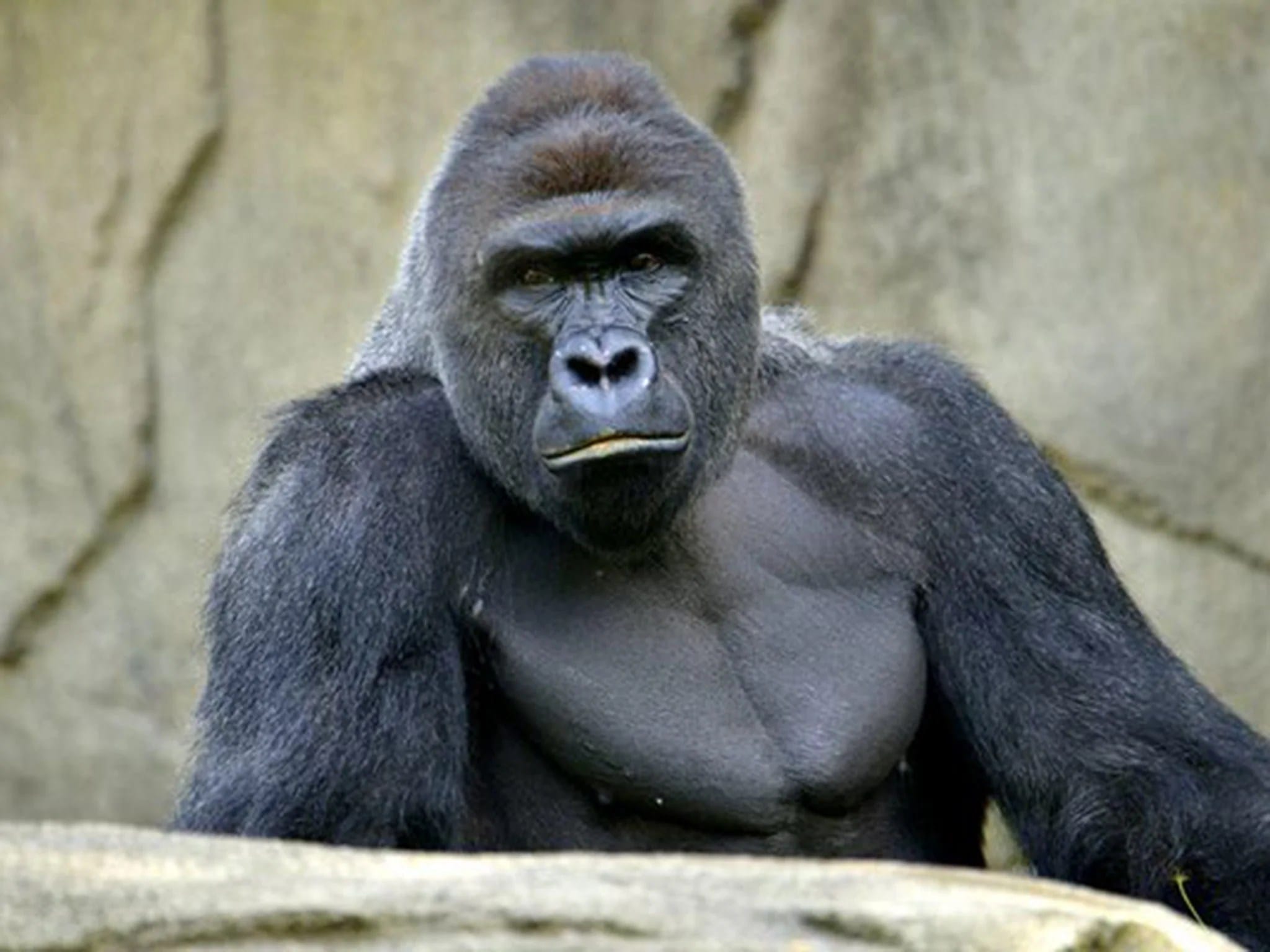On May 28, 2016, the world watched in horror as Harambe, a 17-year-old Western Lowland Gorilla, was shot and killed at the Cincinnati Zoo & Botanical Garden. A young boy’s accidental fall into Harambe’s enclosure sparked a chain of events that culminated in a tragedy, forever changing how we view zoo safety, animal welfare, and the complexities of human-animal interactions.
The Day Tragedy Struck Gorilla World
The incident unfolded at the zoo’s Gorilla World exhibit, a seemingly idyllic habitat designed to give these majestic primates a semblance of their natural environment. A three-year-old boy, separated from his mother for a brief, heart-stopping moment, managed to crawl through a barrier. He then fell an estimated 10-12 feet into the moat that bordered the gorilla habitat.
Harambe, drawn by the commotion, approached the boy. Witness accounts of what transpired in those tense minutes remain divided. Some recall Harambe dragging the boy through the water in a manner that suggested aggression, while others believed they saw signs of protectiveness in his demeanor.
The Impossible Choice
The Cincinnati Zoo’s Dangerous Animal Response Team faced an agonizing dilemma. Tasked with protecting both human and animal life, they had to make a split-second decision in a highly charged, rapidly evolving situation. Fearing for the boy’s safety, the team ultimately made the devastating call to shoot Harambe.
Thane Maynard, the Cincinnati Zoo director, addressed a heartbroken public, saying, “The choice was made to put down, or shoot, Harambe, so he’s gone.” He went on to defend the team’s actions: “They made a tough call…and they made the right call. They saved that little boy’s life.”
A Firestorm of Grief, Outrage, and Debate
The aftermath of Harambe’s death was like a digital earthquake. Grief poured out across social media platforms. Outrage, directed at the zoo, the child’s parents, or both, became a torrent of digital activism.
The incident ignited fierce debates that transcended the confines of the internet:
- Zoo Safety and Enclosure Design: Were zoos doing enough to protect both animals and visitors? The incident forced a critical examination of enclosure security and whether existing safety measures were adequate.
- Parental Responsibility and Supervision: The boy’s ability to breach the barrier led to questions about parental supervision. The incident served as a stark reminder of how quickly a situation can turn dangerous, even in seemingly controlled environments.
- The Ethics of Captivity: On a deeper level, Harambe’s death reignited a long-standing debate about the ethical implications of keeping animals, especially intelligent and emotionally complex creatures like gorillas, in captivity.
- Lethal Force vs. Alternatives: The use of lethal force against Harambe sparked discussions about whether alternative methods of control, such as tranquilizers, could have been employed. The speed at which the situation unfolded and the potential risks associated with tranquilizers in such a scenario fueled the debate.
Harambe’s Legacy: Beyond the Memes
In the years since Harambe’s death, his story has continued to resonate, evolving from a tragic news event to a complex cultural phenomenon. He became the subject of countless memes, often imbued with dark humor and social commentary—a testament to the internet’s ability to simultaneously process grief and find coping mechanisms in unexpected ways.
However, Harambe’s legacy extends far beyond the digital realm. His death brought the plight of Western Lowland Gorillas, a critically endangered species, into sharp focus. Conservation efforts gained renewed momentum, fueled by a collective desire to protect these magnificent animals in the wild.
Was Harambe Hurting the Child? A Question Without an Easy Answer
The most difficult and arguably unanswerable question remains: What were Harambe’s intentions? Was he acting aggressively, posing a genuine threat to the child? Or was he exhibiting a protective instinct, confused and disoriented by the unfamiliar situation?
Witnesses presented conflicting accounts, clouded by the emotional intensity of the moment. Primate experts offered differing interpretations of Harambe’s behavior, drawing on their knowledge of gorilla social dynamics but acknowledging the impossibility of truly knowing what was going through his mind.
Without definitive evidence, the question of Harambe’s intent continues to be debated. Some believe that the zoo’s actions, however heartbreaking, were necessary to protect the child. Others maintain that Harambe was not displaying aggression and that alternative solutions should have been pursued.
A Scientific and Ethical Conundrum: The Fate of Harambe’s Sperm
In a surprising turn of events, reproductive biologists were able to collect and cryogenically preserve Harambe’s sperm following his death. This sparked yet another ethical debate: could Harambe’s lineage be continued through artificial insemination, or would such an act be ethically ambiguous, potentially trivializing his death and raising concerns about the welfare of any offspring conceived under such circumstances?
While the Association of Zoos and Aquariums (AZA) has indicated that using Harambe’s sperm for breeding is unlikely in the near future, its existence presents both scientific and ethical considerations.
From a research perspective, Harambe’s sperm is a valuable genetic resource that could contribute to our understanding of Western Lowland Gorilla genetics, potentially aiding conservation efforts. However, the ethics of using genetic material from an animal who did not give consent for such purposes remains a subject of ongoing debate.
Seven Years On: Reflecting on a Tragedy
Harambe’s story is a stark reminder of the complex relationship between humans and the natural world. It underscores the need for constant vigilance in ensuring the safety of both zoo animals and visitors. It challenges us to examine our own roles in protecting endangered species and to consider the ethical implications of keeping wild animals in captivity.
While the debate surrounding the events of that day may never be fully settled, one thing is certain: Harambe’s legacy will continue to shape how we approach conservation, zoological practices, and the interconnectedness of all living creatures.
- Unlocking Francis Alexander Shields’ Finance Empire: A Comprehensive Biography - July 12, 2025
- Unveiling Francis Alexander Shields: A Business Legacy - July 12, 2025
- Francis Alexander Shields’ Business Career: A Comprehensive Overview - July 12, 2025















